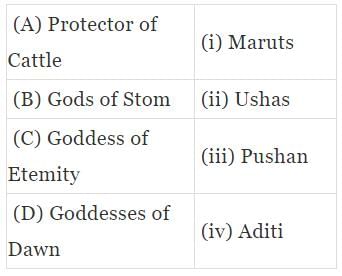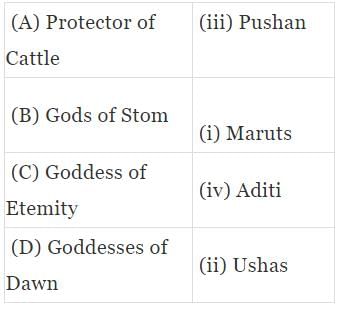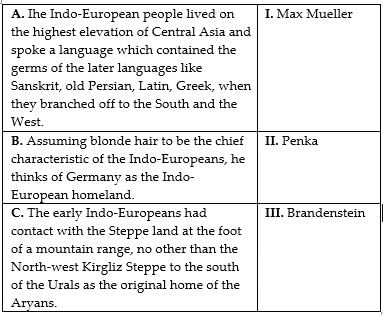Test: Vedic Period - 1 - UPSC MCQ
30 Questions MCQ Test - Test: Vedic Period - 1
Which of the following works was the earliest to deal with the origin of kingship in the form of a legend?
Which one of the following tribal assemblies is considered as the oldest of all?
The division of India into five parts is to be found in which of the following Brahmana?
Which of the following are the Upa Vedas?
(I) Gandharva
(II) Jyotisha
(III) Shilpa
(IV) Ayur
(V) Dhanur
(VI) Shiksha
Which Mandal of the Rig Veda Samhita is wholly devoted to the intoxicating drink of ‘Soma’ ?
The “Great Flood” is said to have occurred during the time of which Manu from whose son the two great Solar and Lunar dynasties took birth.
Which of the following mention the royal sacrifices of Rajasuya, Asvamedah and Vajapeya for the first time?
The manuals of which of the following deal with the correct pronunciation and accentuation of Vedic hymns?
In the Age of 16 Mahajanapadas, there were four great kingdoms. One was Magadha. The other three were
Which God occupied the supreme position in the later Vedic pantheon?
Which type of pottery was most popular with the Later Vedic people?
Match the following rivers according to their ancient names:

It is the river par excellence and mother of rivers and is noted as flowing into ocean. In the nadistuti this river is mentioned between the Yamuna and the Sutudri. Identify it.
The earliest Aryan kingdoms were founded by four kings. Which of the following is not one of them?
On what ground does B.G. Tailk propounded the theory that the original home of the Aryans was the Arctic region?
What are the grounds for the belief that the ancient Iranians and the Vedic Aryans belong to the same race?
Where is Boghazkoi situated and what is the importance of it?
Which one of the following is now most widely regarded as the original home-land of the Indo-European or Aryans?
Which of the following is considered as an Indo-Aryan language?
A. Persian
B. Germanic
C. Spanish
D. Sanskrit
E. Hindi
F. English
Immediately before coming to India, the Indo-Aryans formed part of which one of the following Indo-European Tribes?
What was the main cause of the tribal wars among the early Aryan settlers, the most famous of which is referred to as the Battle of Ten Kings in the Rig Veda?
Which of the following was not one of the distinguished tribes of the later Vedic Period?
Which of the following statements about the Vedic king is CORRECT?
Which of the following Brahmanas belongs to the Yajurveda?























